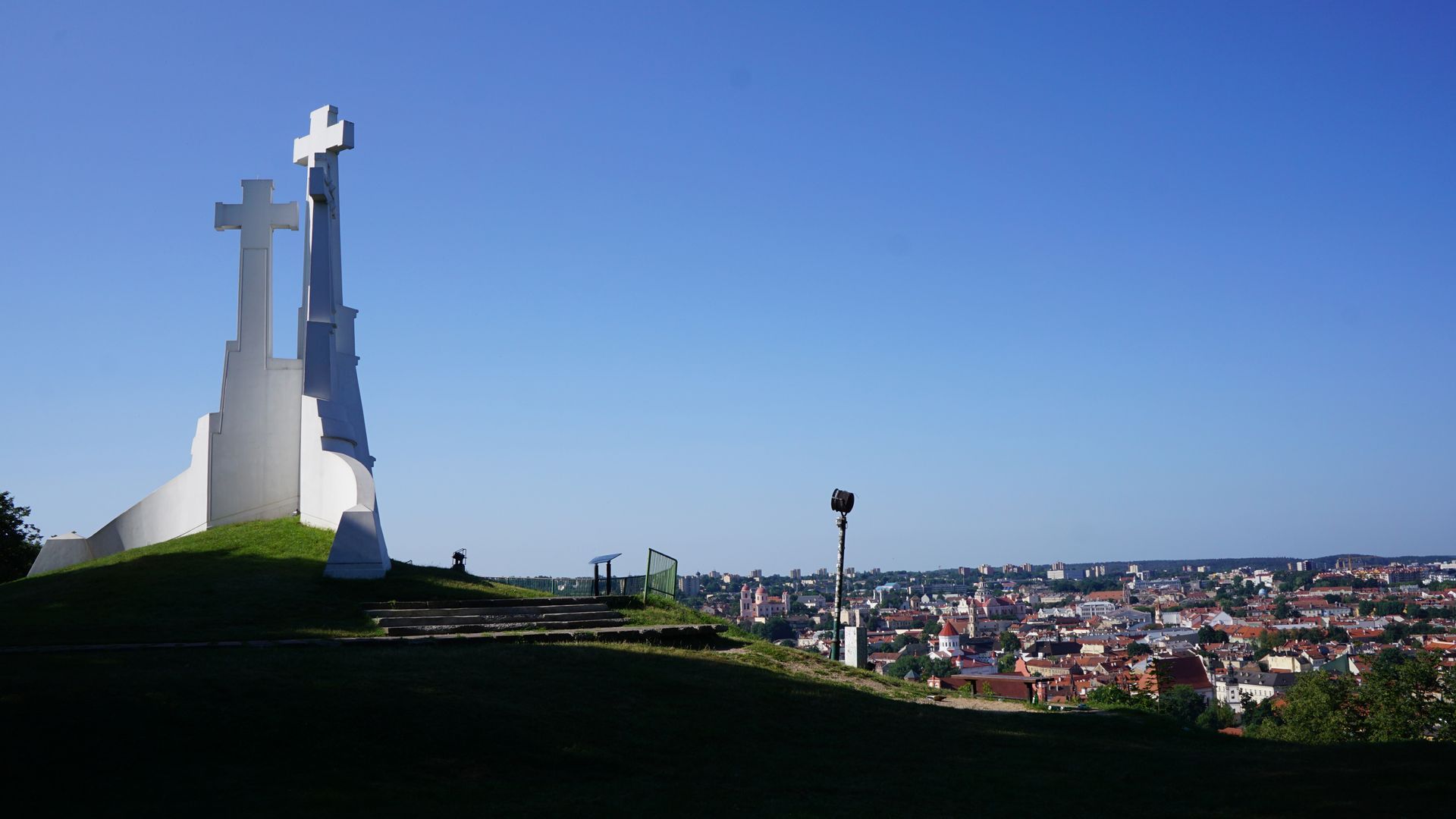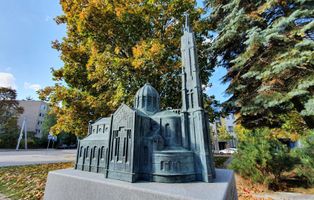
25 people was here
0 reviews
In the iconography of Vilnius, the Three Crosses were 1st depicted in Fryderyk Getkant's plan of the city’s defensive fortifications in 1648. They can be also be seen standing on Bald Hill, also known as Crooked Hill, in an illustration inside Danielius Petceldtas’ panegyric dedicated to Bishop Jurgis Tiškevičius that was published in Vilnius in 1649. Since that time, the Three Crosses have become an integral part of the panoramas of Vilnius, and Bald Hill has been known as the Hill of Three Crosses.
The 3 wooden crosses have been constantly renewed. It’s believed that they sat on the hill until 1869 when they naturally collapsed due to subsidence. Based on a project by the architect and sculptor Antanas Vivulskis dating from 1916, a white Three Crosses Monument was erected on Bald Hill using money donated by the residents of the city who considered this monument being a symbol of their identity and resistance to the outer forces.
The monument was made from reinforced concrete, which at the time was one of the most modern materials available, and its plot was linked to the image of Golgotha Hill. In the past, the residents of Vilnius planted 2 poplars to mark the location of former ancient crosses. Under the order of the Soviet government, in 1950 the Three Crosses Monument was blown up and parts of it were buried on the hill. In 1988 the monument was rebuilt on the initiative of the Reform Movement of Lithuania. The work was supervised by the architect Henrikas Šilgalis.
Archaeologists unearthed the remains of the destroyed crosses during the construction of the new monument. The remaining cross sections of the monument are on display at the foot of the hill. The Three Crosses Monument is now one of the main symbols of the city, and is regularly visited by both the residents of Vilnius and tourists. The hill’s observation deck offers wonderful panoramas of the city spread out below.
Cultural heritage
Loading...
Loading...
Cultural heritage
RELATED ROUTES
©2025 trip.lt


